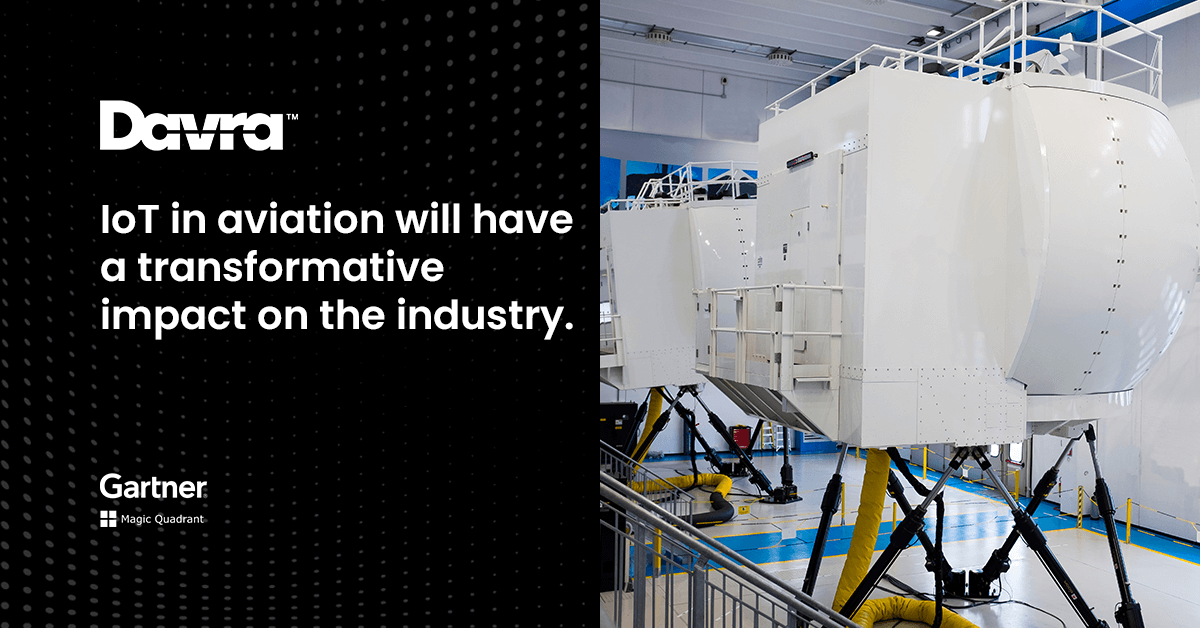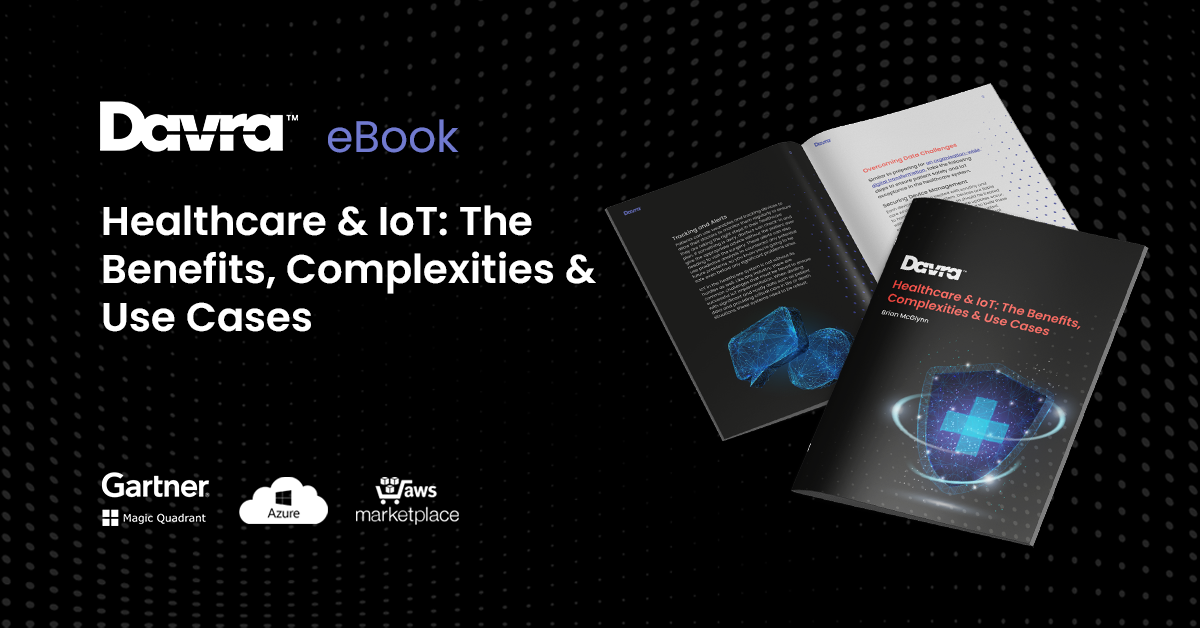As the Internet of Things, or IoT, advances its spread, it’s shaking things up in the air corridors that circle our planet. Anyone can hazard a fair guess that the IoT will continue to proliferate for some time. Quantifying the benefits of said expansion is a bit harder. Although most expert assessments quell any doubt that the IoT in aviation will have a transformative impact on the industry, these alterations might not take the form you’d expect them to.
Having proven itself a huge boon to the transportation sector on land and at sea, the IoT now has to establish its merit in the skies. Fortunately, data science leaders are already showing the way, and at Davra, we’re proud to be among the pacesetters. Here’s what we’ve learned at this early point and where we think you should direct your concentration.
The Aviation Industry’s Use of the IoT Isn’t Uniform
As we’ve covered time and again, the IoT is inherently diverse. Every implementation caters to the unique requirements of specific problem-solving strategies, and even two networks that are designed to answer the same questions might look entirely dissimilar. In the aviation and aerospace industries, however, the distinctions are even more pronounced.
As noted by observers, the aviation IoT may suffer from under investment. Though the potential for change is there, aerospace businesses still fall behind adoption rates in other sectors.
The disconnect can be seen in the fact that many airports, airlines and other enterprises have created niche IoT systems without wholly committing to going all-out. Applications like engine maintenance monitors and part trackers are par for the course among air carriers, yet only some airports complete the picture by offering their patrons services like automated baggage scanning. Multiple airports provide mobile apps that let flyers connect to virtual beacons and download crucial travel information, such as their boarding statuses and directions to terminal gates. Only some commercial carriers, however, provide customer-facing integrations that work seamlessly with these systems.
Interestingly, many of these service deficiencies have recognized smart device solutions. The problem is that the answers are more commonly applied in other fields than in aerospace. For instance, freight trucking companies track individual pallets the same way you’d expect an airliner to follow your bag, and retailers use the IoT to associate specific customers with purchase and brand engagement events to enhance customer service.
Naturally, there’s no single solution that will solve all of these problems, but for many key aviation stakeholders, the situation provokes a clear takeaway. The aerospace industry needs to decide how it’s going to better itself with the IoT, or it will look positively outdated by comparison.
What Are the Benefits You Stand to Gain?
The adoption lag might have a lot to do with the fact that the IoT’s advantages aren’t always clear. For instance, if you’re a non-technical decision-maker, then you might be blissfully unaware that installing a more capable network gateway device or router might help your IoT handle high-volume traffic with improved efficiency.
Luckily, people are beginning to appreciate how the connected computing revolution can change aerospace business models for the better. One Deloitte survey found that 66 percent of industry leaders could highlight clear advantages to supplementing their operating practices with linked smart devices, such as
• Being able to keep consumers more engaged throughout journeys,
• Improving overhead by analyzing business processes to find inefficiencies,
• Building better service models to address common complaints, such as misplaced baggage and incorrect bookings, and
• Enhancing security oversight without detracting from the customer experience.
Naturally, each enterprise is going to approach these goals in its own way. Whereas your favorite airline might use networks of connected miniature devices to monitor material conditions on a massive airplane, an entity like NASA might apply similar distributed communication concepts to experiment with new forms of satellite exploration. Before digging into an IoT project, it’s critical to define the costs, desired benefits and performance variables — even if you’re trying to duplicate something that’s already been done.
Guiding Your Enterprise Toward Flawless IoT Adoption
By now, it should be abundantly clear that the aviation and aerospace industry isn’t going to magically answer your questions about how best to use connected tech. Even though you might be able to look to your competitors, partners, trade bodies and even regulators for limited help with topics like security best practices, in the end, it comes down to you.
As if that doesn’t paint a sufficiently complex picture, the Internet of Things doesn’t come in a nice, orderly package. It’s not like wiring up a network router and switching on the power supply the way you might in a new office space. Instead, you’ve usually got to build the software tools from the ground up to deal with the most relevant situational factors and data streams.
The first step to solving most problems is getting your bearings. Finding a data science partner that has the hands-on expertise to plan and maintain novel IoT solutions could help you choose the ideal heading.
Preliminary Planning
The IoT is a commonly cited example of exponential technology. Once you create a network, its performance advances by leaps and bounds because you can quickly adapt it to take advantage of bleeding-edge hardware and software.
This doesn’t mean that the tech evolution is guaranteed to follow the path you prefer. A poorly planned IoT system might eventually reach a point where it suffers from artificial performance limitations that could have been avoided. For instance, you might experience network slowdowns caused by your improper use of data routing software. These hard-to-predict factors are especially attention-worthy in the passenger aerospace field, where fixtures like public Wi-Fi and mobile devices present security, service quality and legal liability concerns.
Although aerospace enterprises are known for their use of advanced technology, the IoT lies outside their typical field of expertise. Industry leaders that want to match the furious pace set by their peers with the deployment of data-enhanced features, such as smart crew rostering systems and AI fuel consumption algorithms, need to look to known problem-solvers. By partnering with experienced hands, they can ensure that their IoT systems serve their intended purposes without missing a beat — or losing any bags along the way.
Ongoing Oversight
The IoT in aviation and aerospace promises the boons of unheard-of utility. At the same time, these systems require a non-negligible amount of effort to optimize and maintain.
Network management is one area where the aerospace industry’s knowledge deficit sticks out like a sore thumb. Even though professionals like pilots, aircraft engineers, ground crew operations managers, and HR personnel are undoubtedly talented, you can’t expect them to know how to keep a complex network running. Furthermore, the IT workers you already employ are too busy to deal with adding a vast network on top of the ones they already administer.
Good management comes more naturally with dedicated IoT providers. Running an IoT network should be effortless, and enterprises that know how to build these systems from scratch magnify the ease of working with advanced architectures intelligently. For instance, your IoT partner might set you up with specialized performance monitoring tools or dashboards that make omnipresent management an afterthought instead of some inescapable burden.
Take Flight With a Proven IoT Option
The skies are limitless, so your IoT solutions need to be well-traveled. At Davra, we’ve successfully brought the IoT everywhere from the remote wilderness to outer space, and we love empowering industries to push the envelope just as much as we relish data science. Discover how our IoT solutions can help you achieve greater lift today. Contact us for a demo today.
Author
Brian McGlynn, Davra, COO


